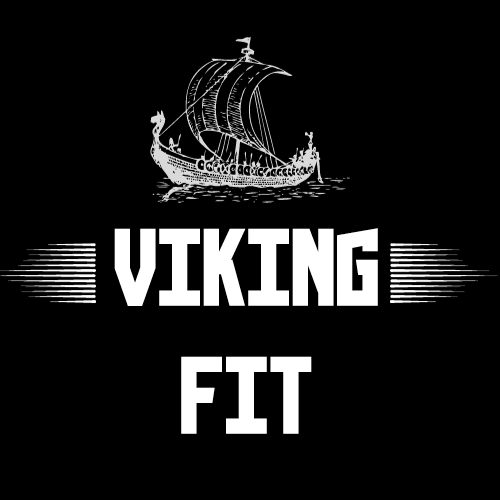Intro
When it comes to high-intensity workouts, two key components that are often emphasized are strength and speed. These two factors play a crucial role in determining performance and overall fitness levels. In this blog post, we will take a closer look at the importance of strength and speed in high-intensity workouts, as well as explore training techniques, strategies, and common mistakes to avoid when aiming to improve in these areas.
Table of Contents
Understanding the Basics of Strength and Speed
In the realm of high-intensity workouts, the concepts of strength and speed are not only foundational but deeply intertwined. At its core, strength refers to the capacity of an individual’s muscles to generate force against resistance. This ability is paramount, as it underpins virtually every movement, from the most basic activities to complex athletic endeavors. Speed, on the other hand, is characterized by the ability to move the body or parts of it swiftly. It’s a critical component in executing movements not just quickly but with the necessary force at the right moment.
The synergy between strength and speed is what elevates athletic performance. This fusion is often referred to as power – the explosive force that can be generated in the blink of an eye. The relationship between these two elements suggests that improving one can have a positive impact on the other. For instance, enhanced strength often leads to an improved capacity for speed, as stronger muscles can exert more force more quickly.

However, it’s crucial to understand that the development of strength and speed requires targeted training strategies. While strength training focuses on increasing muscle force capacity through resistance exercises, speed training emphasizes quick, explosive movements to reduce the time it takes for muscle contractions to occur.
The art of balancing these training modalities is essential for maximizing performance in high-intensity workouts, ensuring that athletes can exert significant force at an accelerated pace.
Understanding this balance and how to cultivate both attributes effectively sets the foundation for a holistic approach to fitness, enabling individuals to push their limits and achieve their peak performance.
The Biological Underpinnings of Muscle Power
At the heart of muscle power, which epitomizes the potent combination of strength and speed, lies a complex biological framework. This framework is significantly influenced by the composition and functionality of muscle fibers, the physical dimensions of muscles, and the intricacies of neuromuscular junctions. Our muscles are composed of two primary fiber types, each tailored to distinct functions. Fast-twitch fibers excel in generating quick, forceful bursts of power, making them indispensable for activities that require a significant degree of speed and strength. Conversely, slow-twitch fibers are the marathon runners of the muscle world, specializing in endurance and efficiency over extended periods.
The dimension of muscle, or hypertrophy, also plays a pivotal role in muscle power. Larger muscle cross-sectional areas are typically associated with greater force output, which is a direct contributor to strength. Training regimens aimed at increasing muscle size often lead to improved strength capabilities, indirectly impacting speed through enhanced force production.

Neuromuscular coordination, the orchestrated interaction between nerves and muscles, is another critical factor. This coordination ensures that muscle contractions are not only powerful but also timely and precise. Training can enhance neuromuscular efficiency, leading to improvements in how quickly and effectively muscles respond to stimuli, which is crucial for both generating power and achieving high speeds. How to Speed Up Muscle Strain Recovery: Proven Strategies and Tips
Targeted training efforts can induce adaptations across these biological facets, optimizing muscle fibers for either speed or strength, enlarging muscle size for greater force output, and honing neuromuscular coordination for improved responsiveness. These adaptations collectively contribute to the development of muscle power, underscoring the intertwined nature of strength and speed in high-intensity physical pursuits.
Training Techniques for Building Strength
For individuals seeking to amplify their muscular strength, incorporating foundational weightlifting exercises is paramount. Squats, deadlifts, and bench presses serve as the cornerstone for this goal, directly targeting the primary muscle groups required for enhanced strength. The progression in the intensity and weight of these exercises is a critical aspect of strength training. By methodically increasing the load, muscles are compelled to adapt, fostering growth and power.
In addition to traditional lifts, incorporating variations and accessory exercises can further augment strength gains. Techniques such as drop sets, supersets, and eccentric loading can introduce novel stimuli to the muscles, encouraging continued adaptation and growth.
Drop sets involve performing an exercise to failure, then reducing the weight and continuing to do more reps until failure is reached again. Supersets combine two exercises back-to-back with minimal rest, which can increase intensity and endurance. Eccentric loading focuses on slowing down the elongation phase of the muscle contraction, which can lead to significant strength improvements due to the increased time under tension.

Employing bodyweight exercises, such as push-ups, pull-ups, and dips, adds another layer of versatility to strength training. These exercises not only build muscle but also enhance core stability and joint integrity, crucial components for comprehensive strength.
Strategic planning of rest days and recovery practices is essential to maximize the effectiveness of these techniques. Adequate rest between strength sessions allows muscles to repair and grow stronger, ensuring continuous progress towards greater muscular strength.
Integrating these varied training techniques while paying close attention to recovery ensures a robust foundation for building substantial strength.
Strategies to Enhance Speed
To elevate speed, incorporating dynamic drills that challenge both the body’s rapid response mechanisms and its ability to execute quick, powerful movements is critical. Plyometrics, for example, play a pivotal role in speed enhancement. Exercises such as box jumps, skater hops, and lunge jumps ignite fast-twitch muscle fibers, essential for explosive starts and sprints.
These activities not only improve muscular power but also refine the nervous system’s ability to trigger swift muscle contractions.
Sprint training is another cornerstone for boosting speed. Interval training, where short bursts of maximum-effort sprints are alternated with periods of low intensity or rest, dramatically increases speed and endurance. This type of training conditions the body to recover quickly and sustain high levels of speed over longer durations. Agility drills, which often include ladder runs and cone drills, further enhance a person’s ability to accelerate, decelerate, and change directions swiftly – vital components of speed in various sports and activities.
To fully harness the benefits of these exercises, proper technique is non-negotiable. Focusing on form during drills ensures effectiveness and minimizes the risk of injury. Additionally, integrating exercises that target core strength can provide the stability needed for efficient power transfer during high-speed movements.
In the pursuit of increased speed, consistency is key. Regularly incorporating speed-focused drills into training sessions gradually elevates the body’s performance threshold.
Coupled with adequate recovery and strategic strength training, these strategies collectively forge a path toward significant improvements in speed, enabling athletes and fitness enthusiasts alike to reach new heights in their high-intensity workouts.
Integrating Strength and Speed in Workouts
To effectively blend strength and speed within a single workout regime, one must carefully structure their training sessions to target these key areas concurrently.
A strategic approach is to alternate between strength-focused exercises and speed-driven drills within the same session. For example, after completing a set of heavy squats (targeting strength), one could immediately engage in a series of high-knee sprints (focusing on speed) to stimulate both muscle power and agility.
This technique, often seen in circuit training, allows for the continuous engagement of different muscle groups, thereby enhancing the workout’s efficiency and overall impact.
Incorporating compound movements that inherently demand both strength and quickness can further optimize workout sessions. Movements such as power cleans and snatch lifts are ideal, as they require a significant amount of force to be exerted in a swift manner, thus naturally fostering the development of both attributes simultaneously.
Additionally, employing HIIT (High-Intensity Interval Training) principles can be particularly beneficial for those aiming to improve endurance alongside strength and speed. By alternating between high-intensity exercises with brief recovery periods, one can significantly boost their cardiovascular capacity while still focusing on muscle building and quickness.
To ensure a comprehensive approach, it’s vital to include exercises that specifically enhance coordination and agility, such as agility ladder drills or plyometric exercises. These activities not only improve speed but also refine the body’s ability to control and efficiently use its strength during rapid movements.
By meticulously planning workouts that address both strength and speed through a variety of methods and exercises, individuals can achieve a more balanced and effective fitness regimen.
The Role of Nutrition and Recovery
Optimal nutrition is a cornerstone of any successful training regimen aimed at enhancing strength and speed. A well-balanced diet, rich in proteins, provides the necessary building blocks for muscle repair and growth, critical after strenuous workouts. Carbohydrates are equally vital, serving as the primary energy source for high-intensity exercises,
while healthy fats contribute to overall wellness and support sustained energy levels. Hydration is another key aspect, as even mild dehydration can significantly impair performance and recovery.

Equally important to nutrition is the focus on recovery practices. Quality sleep cannot be overstressed; it’s during deep sleep that the body undergoes the most significant repair and recovery processes. Incorporating active recovery days into your training schedule can also facilitate muscle healing without halting physical activity altogether.
Techniques such as foam rolling, stretching, and even low-intensity cross-training can enhance blood flow to the muscles, aiding in quicker recovery and preparing the body for the next intense workout.
By prioritizing a diet that supports your training demands and adopting recovery strategies that allow your body to heal and strengthen, you set the foundation for significant improvements in both strength and speed.
This holistic approach to training and recovery not only maximizes performance gains but also minimizes the risk of injury, ensuring that progress towards your fitness goals is both steady and sustainable.
Measuring Progress in Strength and Speed
To accurately gauge enhancements in strength and speed, employing a systematic approach to tracking is essential. Utilizing a workout log offers a detailed record of each session, allowing you to see gradual increases in weights lifted, repetitions completed, or reductions in sprint times.
Establishing benchmarks or baseline performance metrics at the start of your training program provides a reference point to measure against as you progress. Additionally, technology can be a powerful ally in this endeavor; fitness apps and trackers can automatically capture data such as distances run, speeds achieved, and even the intensity of workouts, offering a comprehensive overview of performance improvements over time.
Regular testing, such as time trials for speed or max lifts for strength, can also serve as direct indicators of advancement. By maintaining a consistent schedule for these assessments, you create opportunities to celebrate victories, however small, and identify specific areas needing focus or adjustment.
This proactive monitoring forms the backbone of an effective training strategy, ensuring that every effort contributes towards the overarching goals of increased strength and speed.
Common Mistakes to Avoid
In the journey to amplify strength and speed, it’s crucial to sidestep certain pitfalls that can derail progress. One such mistake is disregarding the significance of recovery. Many individuals, driven by enthusiasm, overlook the necessity of rest days, which are vital for muscle repair and growth.
Without adequate downtime, the body remains in a state of stress, undermining the gains from training sessions and heightening the risk of injury.
Another common error is focusing too narrowly on either strength or speed, neglecting the interconnectedness of the two. Emphasizing one aspect at the expense of the other can lead to imbalances that may affect overall performance and development.
For instance, overconcentration on strength training without speed and agility work can result in a lack of explosiveness, whereas focusing solely on speed drills without building underlying muscle strength can lead to a plateau in performance improvements.
In addition, many fail to properly fuel their bodies to support the demands of high-intensity training. Neglecting nutrition – not consuming enough protein for muscle repair, insufficient carbohydrates for energy, or not hydrating adequately – can impede recovery and performance.
This nutritional oversight can also exacerbate the effects of overtraining and hinder both strength and speed development.
Finally, underestimating the importance of form and technique is a critical mistake. Proper technique ensures the maximum effectiveness of each exercise and reduces the likelihood of injuries.
Prioritizing form over lifting heavier weights or performing faster can lead to more substantial and sustainable improvements in both strength and speed.
Conclusion
Building both strength and speed is essential for anyone looking to enhance their athletic performance or overall fitness. By incorporating the exercises and principles outlined in this guide, you can create a balanced and effective training program. Remember, consistency is key, and with dedication, you’ll see significant improvements in your strength and speed.




